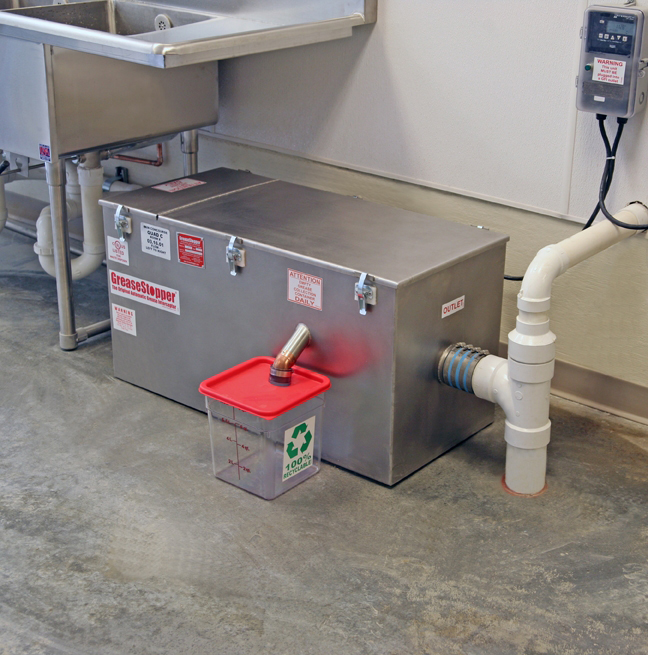Grease interceptors are units used in commercial kitchens to remove fats, oils, and greases (known as FOG) from wastewater. A grease interceptor is a standalone unit that receives wastewater from all of the appliances in the kitchen and treats it before it enters the municipal water system. This differentiates it from a grease trap, which is installed to treat water released from individual devices. The use of a grease interceptor is required by law in municipalities to prevent the municipal water system from becoming clogged with FOG.
How a Grease Interceptor Works
Water enters the grease interceptor through a pipe located about halfway up the unit. Any solids in the water such as food debris sink and accumulate at the bottom of the tank. Fats, oils, and grease having less specific gravity than water float to the top. You’ve probably seen this principle in a parking lot on a rainy day, where motor oil floats on top of a puddle. So, solids fall to the bottom, FOG rise to the top, and the clean water continues out another pipe located in the middle of the unit, where FOG and debris aren’t located. A skimmer periodically removes the grease from the top of the unit and drains it into a repository besides the unit, where it can be collected and recycled, or disposed of. Grease interceptors are also periodically cleaned to remove food debris that accumulates at the bottom of the unit. Click here for a visual graphic that demonstrates how a grease interceptor works.

Source:
http://www.greenturtletech.com/blog/how-do-grease-interceptors-work/